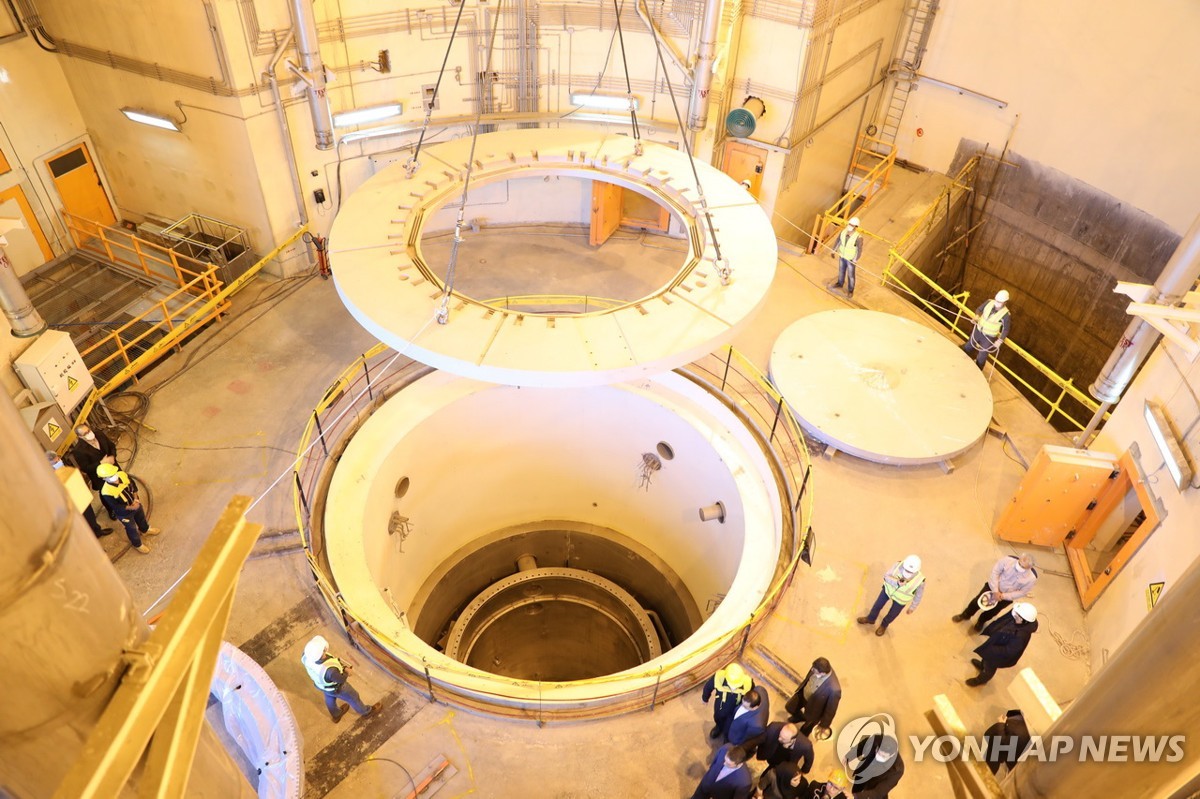Located 280km southwest of Tehran… Design changed due to 2015 nuclear agreement

(Seoul = Yonhap News) Reporter Kang Hoon-sang = The Arak nuclear power plant complex in central Iran, which was bombed by Israel on the 19th (local time), was suspected of being a facility for producing plutonium, the raw material for nuclear weapons.
The Arak nuclear power plant complex is located approximately 280 km southwest of the capital Tehran.
The Arak IR-40 nuclear power plant, the core facility of the complex, is characterized by its heavy water reactor. Heavy water reactors use heavy water (D₂O, water in which two deuterium atoms with an atomic weight of 2 are combined with one oxygen atom) as a moderator and coolant.
Unlike light water reactors, heavy water reactors can use natural uranium directly as nuclear fuel. This means that there is no need for a uranium enrichment process.
Since natural uranium is used as fuel, more plutonium is produced after a nuclear reaction than in light water reactors, which is why the construction of heavy water reactors is often suspected of being related to a nuclear weapons program. This is why the international community was on edge when the Iranian government announced in August 2006 that it would begin construction of the 40MW Arak heavy water reactor.
The Iranian government claimed that it was intended to produce research isotopes as a replacement for the existing Research Reactor (TRR) in Tehran at the time. The Atomic Energy Organization of Iran (AEOI) announced in July 2011 that it was 75% complete.
Iran had been at odds with the International Atomic Energy Agency (IAEA) over the provision of information and on-site inspections of the Arak heavy water reactor, and it was not until February 2013 that the IAEA’s design verification team was able to visit the site. In its May 2013 report, the IAEA pointed out that Iranian authorities had failed to submit the latest design information document (DIQ), and that Iran was not fulfilling its obligations under the safeguards agreement.
The United Nations Security Council (UNSC) also consistently requested the Iranian government to stop construction of the Arak nuclear power plant due to concerns about the production of nuclear weapons. However, the Iranian government countered that the main purpose of the nuclear power plant is not to produce plutonium, and that the plutonium, which is estimated to be 9 kg per year, cannot be used to produce nuclear weapons, and that there is no reprocessing facility.
At the Arak nuclear power plant complex, construction began on a plant to produce heavy water needed for the heavy water reactor in 2001, and has been producing 25 tons of heavy water annually since 2004.
Considering the progress of construction, it was expected to be operational by 2014, but it was left unfinished due to delays in fuel molding and intensifying nuclear negotiations between the West and Iran.
The Arak heavy water reactor, which was nearing completion, was effectively 'impotent' when the Iran nuclear deal (JCPOA, Joint Comprehensive Plan of Action) was signed in 2015. According to the Joint Plan of Action (JPOA), which was an interim agreement prior to the JCPOA, the Iranian authorities suspended the construction of the Arak heavy water reactor for six months in 2013 and agreed to submit the latest DIQ and on-site inspection to the IAEA.
Later, under the JCPOA, a working group led by China and the United States decided to redesign the plant so that it could not produce weapons-grade plutonium and replace it with a medical and scientific research reactor. As per this agreement, the reactor (pressure vessel) was removed in January 2016 and the space was filled with concrete. The IAEA Board of Governors confirmed this and issued a report verifying the disablement of the Arak heavy water reactor.
Although US President Donald Trump unilaterally withdrew from the JCPOA in May 2018, Iranian authorities maintain that they are continuing to redesign and rebuild the Arak nuclear power plant to minimize plutonium production within the JCPOA framework.

